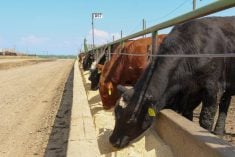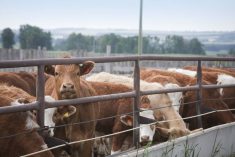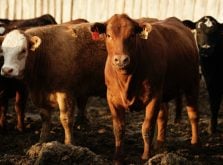In late June, Alberta packers were buying fed cattle in the range of $243 to $245/hundredweight on a dressed basis and $143 to $145 on a live basis. The fed cattle market has dropped about $12 over the past month and will likely continue to grind lower into July and August.
The U.S. and Canadian weekly slaughter pace continues to run above year-ago levels and the market is functioning to encourage demand through lower prices. Packing margins have been very strong, encouraging the slaughter pace, but wholesale prices are softening. There is a very strong seasonal tendency for wholesale beef prices to trend lower from mid-June through to mid August.
Read Also

Harvest wraps up and fall work begins
At the Eppich famly ranch in western Saskatchewan, the fall harvest was successful with few breakdowns, cows and calves have been sorted and a new tractor has arrived
Feeder cattle prices have been surprisingly strong. During the last week of June, larger-frame steers averaging just under 950 pounds were quoted at $183 in southern Alberta; higher-quality steers weighing between 700 and 725 pounds were actively trading from $218 to as high as $223 in the same region. It appears that yearling supplies could be tighter come fall and feedlots are extremely aggressive to secure ownership. Calves are now trading at similar levels to last November. While nearby feeding margins are hovering in red ink, there is a fair amount of optimism for the fall and winter period.
The weekly Canadian and U.S. slaughter pace is running sharply above year-ago levels and this will likely continue into July. However, in August, it looks like the slaughter pace will only be marginally higher than August 2017. Once we move into September, the slaughter pace will move below year-ago levels, which will support the fed cattle market.
Beef demand is coming in stronger than expected due to the robust economy south of the border. Unemployment continues to hover near historical lows while consumer confidence remains near record highs. U.S. GDP during the second quarter is expected to finish in the range of three to four per cent. Approximately 70 per cent of U.S. GDP is composed of consumer spending. As a rule of thumb, a one per cent increase in consumer spending equates to a one per cent increase in beef demand. Recent data shows U.S. at-home food spending running 5.4 per cent above 2017 while away-from-home food spending is up 3.4 per cent from year-ago levels. Despite the stronger demand, wholesale beef prices are grinding lower as production increases. However, the summer lows for fed cattle prices will not be as severe as last year.
Feeding margins have been hovering in red ink due to the high-priced calves and yearlings in November and December. The spring rally in the barley market also caught many cattle feeders off guard resulting in higher costs per pound gained. Barley prices softened over the past couple of weeks in June. Western Canada and the U.S. Midwest had received sufficient rainfall. Above-trend yields are expected for both corn and barley. Feedlot operators are counting on lower feed grain costs during the fall.
Positive fourth-quarter outlook
The positive fourth-quarter outlook for fed cattle along with the lower feed grain costs has caused yearling prices to surge. Many feedlots in southern Alberta were carrying lower numbers due to the adverse spring weather. At this time, quality packages of yearlings are rather scarce. Another factor to consider is the weaker Canadian dollar. Year-to-date feeder cattle exports to the U.S. for the week ending June 9 were 125,305 head, which is a year-over-year increase of 67 per cent. We now find cattle-on-feed inventories in Alberta and Saskatchewan running at very similar levels to last year.
The fed cattle market is expected to trend lower through July; however, the market should stabilize in mid August and September because market ready supplies will drop below year-ago levels. The feeder cattle market is expected to stay firm due to the positive outlook for fourth quarter cattle prices and lower feed grain costs.















